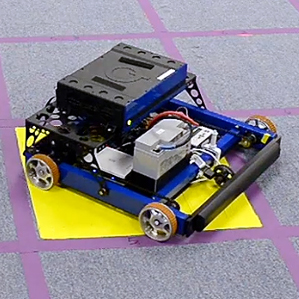The noninvasive diagnostic, described in a recent issue of the journal ACS Nano, relies on nanoparticles that detect the presence of thrombin, a key blood-clotting factor.
Lead authors of the paper are Kevin Lin, a graduate student in chemical engineering, and Gabriel Kwong, a postdoc in IMES. Other authors are Andrew Warren, a graduate student in Health Sciences and Technology (HST), and former HST postdoc David Wood.
Bhatia and her colleagues developed their new test based on a technology they first reported last year for early detection of colorectal cancer. “We realized the same exact technology would work for blood clots,” she says. “So we took the test we had developed before, which is an injectable nanoparticle, and made it a thrombin sensor.”
The system consists of iron oxide nanoparticles, which the Food and Drug Administration has approved for human use, coated with peptides (short proteins) that are specialized to interact with thrombin. After being injected into mice, the nanoparticles travel throughout the body. When the particles encounter thrombin, the thrombin cleaves the peptides at a specific location, releasing fragments that are then excreted in the animals’ urine.
Once the urine is collected, the protein fragments can be identified by treating the sample with antibodies specific to peptide tags included in the fragments. The researchers showed that the amount of these tags found in the urine is directly proportional to the level of blood clotting in the mice’s lungs.
Bhatia says she envisions two possible applications for this kind of test. One is to screen patients who come to the emergency room complaining of symptoms that might indicate a blood clot, allowing doctors to rapidly triage such patients and determine if more tests are needed.
Another application is monitoring patients who are at high risk for a clot — for example, people who have to spend a lot of time in bed recovering from surgery. Bhatia is working on a urine dipstick test, similar to a pregnancy test, that doctors could give patients when they go home after surgery.
The technology could also be useful for predicting recurrence of clots, says Henri Spronk, an assistant professor of biochemistry at Maastricht University in the Netherlands.
Bhatia plans to launch a company to commercialize the technology, with funding from MIT’s Deshpande Center for Technological Innovation. Other applications for the nanoparticle system could include monitoring and diagnosing cancer. It could also be adapted to track liver, pulmonary, and kidney fibrosis, Bhatia says.
The research was funded by the Koch Institute Frontier Research Fund, the Kathy and Curt Marble Cancer Research Fund, the Mazumdar-Shaw International Oncology Fellows Program, the Burroughs Wellcome Fund, and the Deshpande Center.
